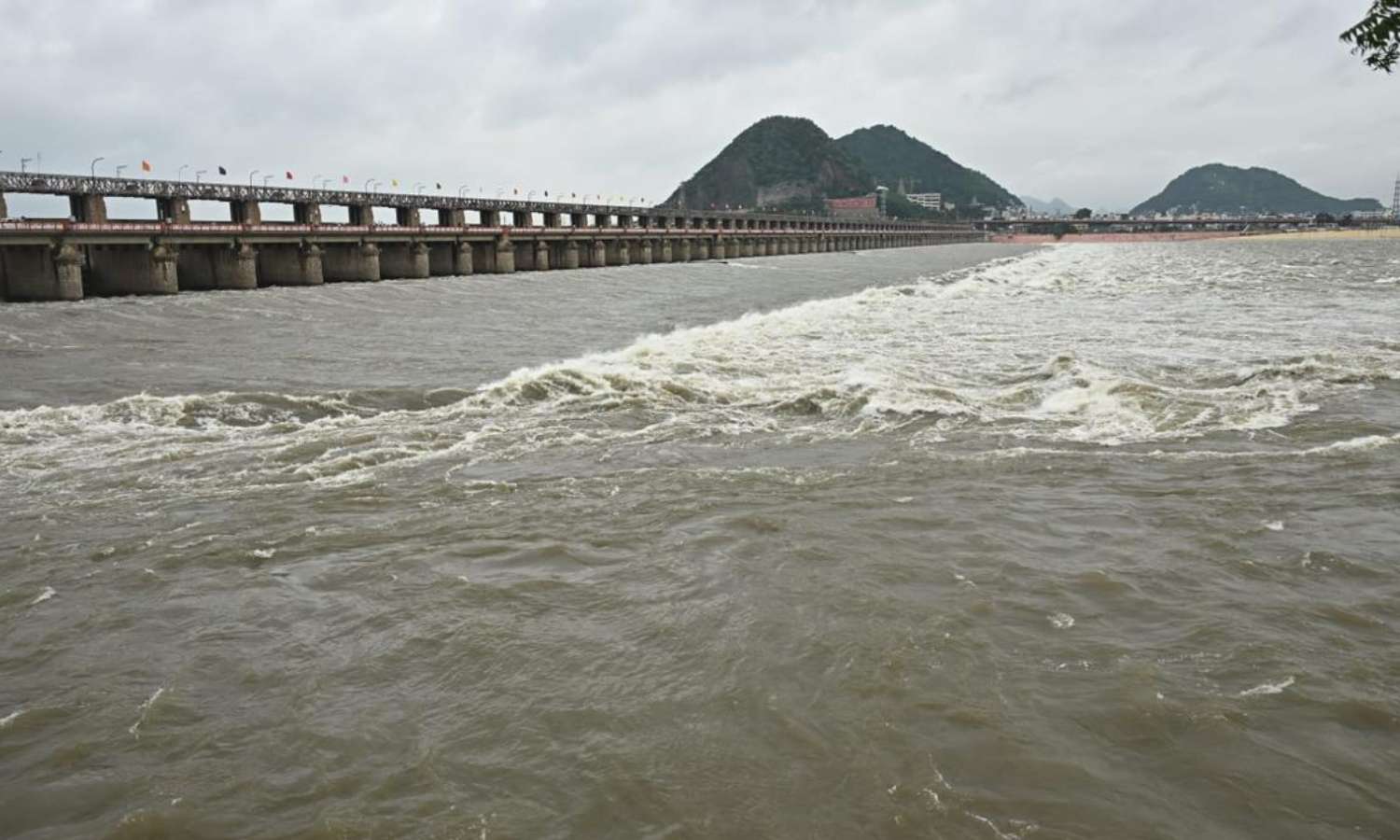Hyderabad: Authorities issued flood alerts along the Krishna and Godavari rivers on Friday after heavy inflows pushed multiple reservoirs to full capacity, triggering large-scale water releases and emergency preparedness measures in downstream areas.
Heavy rains over catchment areas in Maharashtra, Karnataka, and Telangana drove inflows into major dams and barrages across both river basins. By noon on August 29, real-time flood bulletins reported volumes in the range of several lakh cusecs, forcing operators to release water and placing villages downstream at risk.
In the Krishna basin, the Srisailam reservoir reached its full reservoir level (FRL) of 885 feet, holding 215.81 TMC. It received 2.95 lakh cusecs and discharged 3.34 lakh cusecs. The Nagarjuna Sagar dam downstream also touched its FRL of 590 feet, storing 312.05 TMC, with inflow and outflow at 2.60 lakh cusecs. With no cushion remaining, further rainfall poses a flood threat to downstream areas.
The Pulichintala project saw inflows of 2.50 lakh cusecs and released 2.11 lakh cusecs. The Jurala and Tungabhadra dams also recorded heavy inflows. Upstream in Karnataka, Almatti and Narayanapur reservoirs continued releasing significant volumes, contributing to the flow surge. While dam structures were reported safe, the absence of storage space has reduced flood mitigation capacity.
Sripada Yellampalli, Medigadda see record flood discharges this season
In the Godavari basin, Sri Rama Sagar Project recorded inflows of 4.30 lakh cusecs and outflows of 5.25 lakh cusecs. Nizam Sagar handled 1.61 lakh cusecs. At Sripada Yellampalli, inflows peaked at 7.15 lakh cusecs, with 6.96 lakh cusecs released. These volumes added pressure downstream.
The Kaleshwaram project’s Medigadda (Laxmi Barrage) registered 9.36 lakh cusecs, while Sammakka Sagar (Tupakulagudem) discharged over 8.37 lakh cusecs. Bhadrachalam saw river levels rise to 37.5 feet, with 6.87 lakh cusecs entering the region. Low-lying mandals in Bhadradri Kothagudem district were placed on alert, with warnings of danger-level crossings if upstream releases persist.
Compared to the same date in 2024, this year’s inflows are significantly higher. Both Srisailam and Nagarjuna Sagar had lower levels last year, while Yellampalli and Medigadda did not witness such volumes, pointing to an intensified monsoon phase.
Engineering teams have been deployed to monitor critical dam structures. District collectors were directed to prepare evacuation plans and reinforce embankments. Measures such as sandbagging and flood drills are underway in flood-prone zones.
With additional rainfall forecast over Maharashtra and Chhattisgarh, further inflows are expected. “Reservoirs are holding at maximum levels, and any fresh inflow must be immediately released. The priority is to ensure public safety while protecting project structures,” an irrigation official said.
The pressure across the Krishna and Godavari systems has raised concerns about balancing irrigation and power generation needs with the immediate necessity of flood control.

